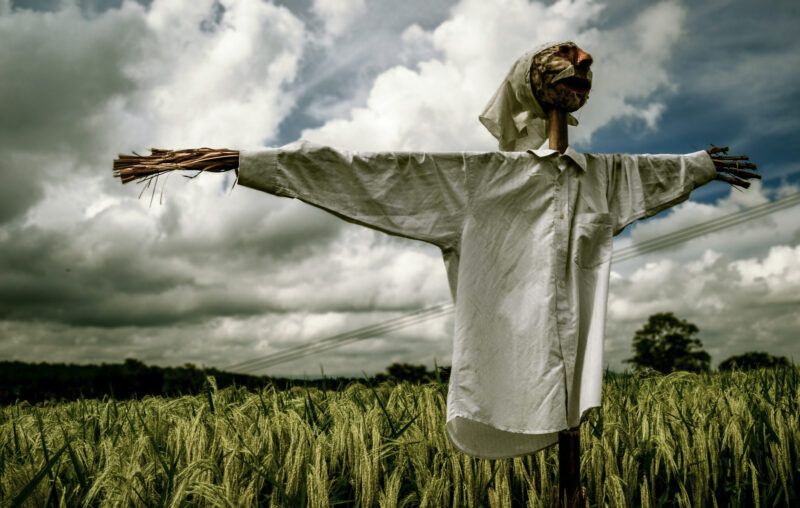So Much for the “Strawman” of Lockdowns

The Great Barrington Declaration website went live on October 5, 2020. Over the next four weeks it amassed signatures from over 10,000 health scientists, 30,000 medical practitioners, and 600,000 members of the general public – all calling for an end to lockdowns as the primary tool for mitigating Covid-19. Lockdowns have imposed immense social and economic harms over the last eight months. Meanwhile, surprisingly little evidence exists to support the effectiveness of the lockdown approach.
The response from previous defenders of such policies, both in epidemiology and journalism, sought to both vilify the signers of the Declaration and deny that lockdowns are even on the table as a future policy option.
Gregg Gonsalves, an epidemiologist at Yale University, answered the Declaration on October 5th: “First, let’s knock down the straw man up front. No one is supporting massive, across-the-board lockdowns everywhere, all the time. This is the foil for these arguments. And it’s a convenient bogeyman.”
William Hanage, an epidemiologist at Harvard University, reacted to the Great Barrington Declaration on October 6th: “This is a dangerous falsehood. This is a very narrow sample of ‘top scientists’ and certainly not representative of the world. And lockdown is not the alternative.”
Matt Reynolds, a science reporter for Wired UK, wrote on October 7th: “The kind of lockdown that the Great Barrington Declaration seems to be railing against hasn’t been in place in the UK since mid-June.” He continued, “When the Great Barrington Declaration authors declare their opposition to lockdowns, they are quite literally arguing with the past.”
Sonia Sodha, a columnist with the Guardian, wrote on October 11th: “The [Great Barrington] declaration sets itself up against a straw proposal that nobody is arguing for – a full-scale national lockdown until a vaccine is made available.” (Addendum, 1/5)
Gonsalves again wrote on October 12th: “No one likes lockdowns. No one thinks that they are without secondary harms. And most importantly, NO ONE is arguing for Wuhan-style full-scale lockdowns. No one is. But a straw man argument is being set up by those who want to mislead the American and British publics.”
David Gorski, an oncologist and editor of the Science-Based Medicine blog, wrote on October 12th: “Straw man arguments [against lockdowns] are the entire basis for #GreatBarringtonDeclaration”
Angela Rasmussen, a virologist at Columbia University, wrote on October 14th to endorse and reiterate Gonsalves’s attack on the Great Barrington Declaration: “Nobody is arguing for full indefinite lockdowns.”
Tyler Cowen, an economist at George Mason University and columnist for Bloomberg, reacted to the Great Barrington Declaration on October 15th: “The critics who emphasize lockdowns are setting up a straw man.”
John M. Barry, a medical historian at Tulane University, wrote in the New York Times on October 19th: “Finally, the Great Barrington Declaration aims at a straw man, opposing the kind of large, general lockdown that began in March. No one is proposing that now.”
Hisham Ziauddeen, a neuroscientist and signer of the John Snow Memorandum to the Lancet, wrote on October 26: “Those arguing for a herd immunity strategy and railing against the lockdown strawman they have created (see the Great Barrington declaration).”
The same day Ziauddeen co-authored an article with Deepti Gurdasani, an epidemiologist and Snow Memorandum signer, declaring that the Great Barrington Declaration was arguing against “a strawman that the science is not only not advocating for, but very keen to avoid.”
David Holtgrave, a professor of public health at the University of Albany, wrote on November 3: “Further, the [Great Barrington] declaration sets up a straw-person argument that asserts some people want a lockdown of society, and then argues against it. No one that I know of is arguing for a complete lockdown of society.” (Addendum, 11/3)
Carl T. Bergstrom, a biologist at the University of Washington and frequent lockdown advocate on social media, wrote on November 6: “More generally, the whole thing is bizarre because [GBD co-author Jay] Bhattacharya is arguing against a lockdown strawman that no one is advocating let alone implementing.” (Addendum, 5/6)
Gideon Meyerowitz-Katz, an epidemiologist at the University of Wollongong and health blogger for the Guardian newspaper, wrote on December 14 that the Great Barrington “authors poison the well with this straw man – it is simply not true that anyone anywhere is advocating for indefinite lockdowns.” Meyerowitz-Katz’s comments follow a month of renewed lockdowns in multiple countries and states, and rest their argument on the rhetorical sleight of hand of claiming that the current lockdowns are not “indefinite” even though they are widespread, recurring, and subject to multiple extensions (Addendum, 12/14)
Stephen L. Archer, a professor of medicine at Queen’s University, Ontario, wrote on October 18 that the Great Barrington Declaration “begins with the false premise that governments intend to lock down society.” He further describes it as “a false choice between a wholesale return to our pre-pandemic lives (which is objectively dangerous) versus a total lockdown (which no one advocates).” (Addendum, 4/17)
As of this writing, new national lockdowns have been imposed or announced for the following countries:
- Ireland (10/21)
- Czech Republic (10/22)
- Wales (10/23)
- France (10/30)
- Germany (11/2)
- Belgium (11/2)
- Greece (11/3)
- Austria (11/3)
- United Kingdom (remainder of country, 11/5)
Similar returns to lockdown are being actively discussed at the national level across Europe, and on a regional basis in the United States.
The much-derided “straw man” of renewed lockdowns, it would appear, has already sprung to life.










